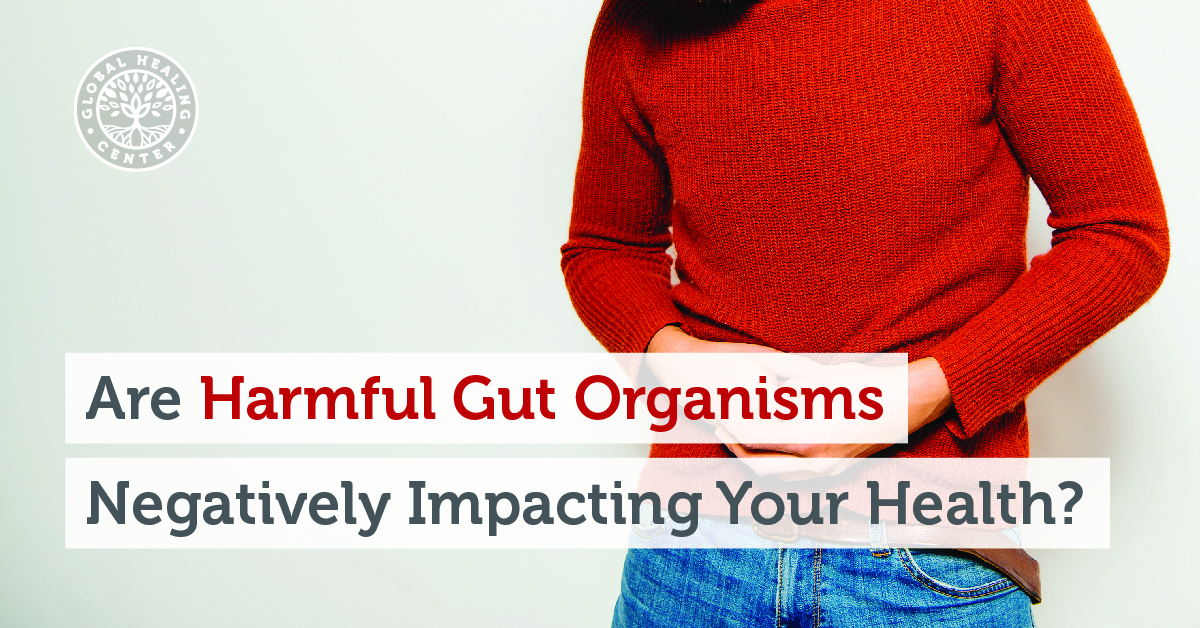
Bacteria, viruses, fungi, parasites — there are many types of harmful organisms and nearly everyone is affected at some point in their life.[1] Different types of harmful organisms target the body differently. Here, we’ll look at harmful organisms that disrupt gut health.
What Are Harmful Organisms?
Harmful organisms are ones that live off another organism by living on or in them. Essentially, the harmful organism takes up residence in the host. In this relationship, harmful organisms steal nutrients and release waste, which negatively affects the overall health of the host. Harmful organisms are present everywhere, from developing nations to those considered first-world, and have affected humans since the beginning of time; references even appear in some of our oldest written records.[2, 3]
What Is "The Gut?"
The human digestive tract is a complex system comprised of many parts that, together, function as a single unit. Organs, enzymes, bacteria (commonly referred to as the gut microbiota), and other components collectively make up what we know as “the gut.” In many ways, it is a model ecosystem.
One truth I’ve observed again and again is that gut health is closely tied to overall health. When your gut is vibrant, so are you. When it’s not, neither are you. In fact, when gut function is disrupted, every part of the body is negatively affected. It’s a reality that makes gut-targeting harmful organisms especially devastating.[4]
Which Harmful Organisms Affect the Gut?
The gut is home to many organisms. Most, like probiotics, are absolutely essential to your health, others are detrimental. The two most common organisms that prey on the gut are protozoa and helminth worms.
Protozoa are microscopic, one-celled organisms and many affect humans.[2] Some protozoa can form protective "shells" called cysts that allow them to lay dormant for years before affecting your health. Cysts even enable protozoa to survive externally, which means they can transfer to and infect new hosts.[5]
Helminth worms are a bigger threat in terms of both species (nearly 300 types can affect humans) and size. Adult helminths range in size from under a millimeter to over a meter in length.[6] That’s not a misprint — they can be over a meter, living in your body.
Until recently, it was believed that there are two major varieties of helminth worms — roundworms (nematodes) and flatworms (platyhelminths). Flatworms include tapeworms (cestodes) and flukes (trematodes).[7, 8] Researchers have also discovered an entirely new type of helminth called ropeworms.[9] Ropeworms can grow to a meter long and have a lumpy, rope-like shape. They are often mistaken for feces or mucus and go undetected.
How Do Harmful Organisms Affect Gut Health?
Protozoa are aggressive and multiply rapidly.[10,11] They have the capability to be overwhelming and, in the worst situations, cause very serious health impacts.[7] Symptoms vary by species of protozoa but typically include diarrhea and stomach complaints.
Conversely, worms live long and grow slowly. They attach to the intestinal lining or burrow deep into tissue. There, they take your nutrients and cause intestinal obstruction, often producing chronic, gradually worsening health conditions.[6] In children, worms can affect normal development of the body and brain.[7] Unlike protozoa, worms do not multiply within the human body.
How to Avoid Harmful Organisms
Harmful organisms are transmitted through fecal contamination of food or water and by person-to-person contact.[10,12] If your system is overtaken by protozoa, the concern will be apparent. Worms, however, can live inside the human gastrointestinal tract for years without causing symptoms. When symptoms do appear, they tend to surface in the form of digestive issues.
Proactive measures are the best defense against all types of harmful organisms. Strategies to avoid harmful organisms include:
- Wash your hands with soap and water before handling food or eating.
- Thoroughly wash fruits and vegetables before eating.
- Be cautious about the origin of your food (especially prepared foods).
- I advocate a vegan diet but if you consume meat, cook it thoroughly and appropriately.
- If you grow your own produce, use safe, organic methods of pest control.
- Protect yourself from environments that accommodate harmful organisms. For example, don’t walk barefoot through puddles.
- If you have indoor pets, limit their outdoor time and groom them regularly.
- Regularly cleanse your living environment.
- Try a harmful organism cleanse.
References (12)
- "Parasites and Foodborne Illness." United States Department of Agriculture Food Safety and Inspection Service. USDA.gov, 7 Aug. 2013. Web. 06 June 2016.
- Cox, F. E. G. “History of Human Parasitology.” Clinical Microbiology Reviews15.4 (2002): 595–612. PMC. Web. 6 June 2016.
- ZACCONE, P et al. “Parasitic Worms and Inflammatory Diseases.” Parasite Immunology 28.10 (2006): 515–523. PMC. Web. 7 June 2016.
- ”Intestinal Parasites." University of Maryland Medical Center. University of Maryland, 8 Apr. 2014. Web. 07 June 2016.
- Yaeger RG. Protozoa: Structure, Classification, Growth, and Development. In: Baron S, editor. Medical Microbiology. 4th edition. Galveston (TX): University of Texas Medical Branch at Galveston; 1996. Chapter 77.
- Wakelin D. Helminths: Pathogenesis and Defenses. In: Baron S, editor. "Medical Microbiology. 4th edition." Galveston (TX): University of Texas Medical Branch at Galveston; 1996. Chapter 87
- "Helminth Parasites." PARA-SITE. The Australian Society for Parasitology, n.d. Web. 07 June 2016.
- Haque, Rashidul. “Human Intestinal Parasites.” Journal of Health, Population, and Nutrition 25.4 (2007): 387–391. Web.
- Volinsky, Alex A., et al. "Development stages of the" rope" human intestinal parasite." arXiv preprint arXiv:1301.2845 (2013).
- "About Parasites." Centers for Disease Control and Prevention. Centers for Disease Control and Prevention, 05 Mar. 2014. Web. 07 June 2016.
- "Protozoan Parasites." PARA-SITE. The Australian Society for Parasitology, n.d. Web. 07 June 2016.
- Lee, Marilyn B. “Everyday and exotic foodborne parasites" The Canadian Journal of Infectious Diseases 11.3 (2000): 155–158. Web.
†Results may vary. Information and statements made are for education purposes and are not intended to replace the advice of your doctor. If you have a severe medical condition or health concern, see your physician.







